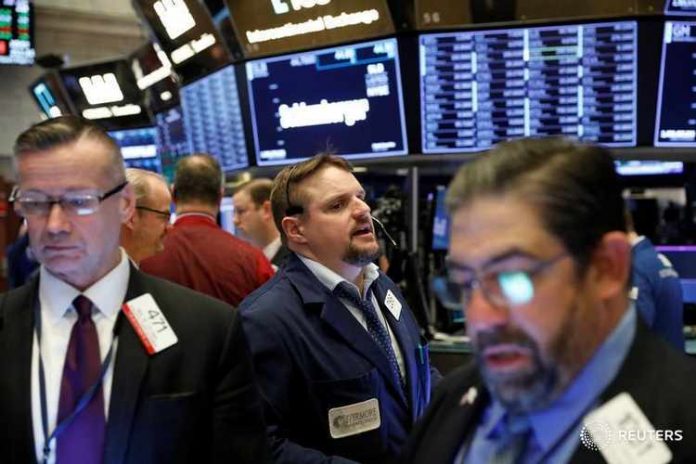After a rough trading session yesterday, equities received another “gut punch” earlier this morning, courtesy of some disappointing economic data.
The major indexes plunged over 1% shortly after the market opened as a result, before recovering slightly by midday. If the losses hold, equities will have logged another 3-day losing streak – something that’s become quite common in 2019, usually following an impressive rally.
This time, the market’s worried about the Institute for Supply Management’s (ISM) U.S. nonmanufacturing index, which clocked in at 52.6 for September. That’s the lowest ISM service sector reading since August 2016, falling well below economist estimates of 55.3.
In response, investors latched on to “safe haven” assets like gold and Treasurys. The 10-year Treasury yield dropped to 1.53% (from 1.6%), while gold futures leaped 0.7% to $1,518 per ounce.
This morning’s ISM report comes just a few days after the organization released its manufacturing index data, which sent bulls running in a similar manner.
And even though underwhelming numbers from the ISM aren’t indicative of recession on their own, they certainly contributed to fears stemming from uncertainty.
It’s something analysts have talked about quite a bit recently; that investors (and analysts, too) can’t make up their minds about what’s going to happen. Instead of getting answers, each new headline has only produced more questions.
“Is a slowdown coming? Will U.S. rates go negative like the rest of the world? Will Trump be impeached? Will Elizabeth Warren be the Democratic nominee? If she wins the primary, can she actually win the presidency in 2020?”
And of course, we can’t forget the one that started it all…
“What the heck is going on with the trade war?”
Or, more importantly, “What effect does it have on the West?”
Just a month ago, it appeared as though the U.S. and China were ready to negotiate after scheduling an October meeting in Washington.
Now, however, lines of communication are breaking down, contributing even further to the market’s buy-and-sell the news investing methodology – a practice that’s been pushed to new heights in 2019 as uncertainty rises.
“Bottom line: Elevated uncertainty is threatening economic confidence after September’s stock market bounce ran out of steam,” wrote Willie Delwiche, investment strategist at Baird, in a note.
“The manufacturing sector continues to weaken, CEO confidence is at its lowest level in a decade and the pace of private sector job growth is slowing.”
What’s driving the market’s pessimism, however, are not the typical pre-recession warning signs. Yes, the yield curve inverted, but real unemployment remains low, wage growth has impressed, and past corporate earnings have, at the very least, been satisfactory.
Instead, “nontraditional valuation metrics” are gouging stocks, just like they did in 1999, right before the dot-com bubble burst.
“You have to be skeptical of markets, entire markets, where more and more stocks are valued on something other than earnings. This is what happened during the dot-com crash — you had tons of companies that were trading on eyeballs and page clicks,” said Mad Money’s Jim Cramer last week.
It seems that the same philosophy has extended to the market’s economic outlook, in which investors are juggling potentially hazardous events across the world. As I’ve said before, the true test is coming in a few weeks, when we reach the midway point of earnings season.
Until then, everything else is just hype. The ISM’s indexes, while helpful, are by no means the be-all, end-all indicator of economic health. Dollars and cents are, and without hard data (plus positive earnings guidance), speculators are simply taking bearish shots in the dark.
Even though the economy might actually be stronger than the market is letting on.








